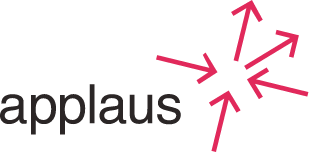ENG. VERSION: KNOW YOUR AUDIENCE!
Applaus’ textbook KNOW YOUR AUDIENCE! offers cultural institutions the tools, models and frameworks for their audience-focused efforts.
About the textbook
KNOW YOUR AUDIENCE! is written by Søren Friis Møller, PhD and Educator.
Graphic design: Nanna Grunwald.
Chapters
In Chapters 1 and 2 you will learn how to get to know your current audience on the basis of quantitative and qualitative studies, and describe them in segments and personas, so you have a good basis for further work.
In Chapter 3, you will formulate your audience development project and set objectives for it on the basis of the three parameters of audience development: Economy, Numbers and Attitude.
In Chapter 4, you will work on prioritising the element of audience development work that precedes and paves the way for the ‘good idea’ for content: partly by taking an ‘extended’ look at your content and your relationships with the audience; and partly by looking at the maturity level of your institution in terms of generating and utilising data.
In Chapter 5, you will design your process, either on the basis of what already works well, or as an iterative process inspired by design thinking, reflecting on how you can use focus groups in your audience development work.
In Chapter 6, you will go one step further, working on how the ethnographic methods of design anthropology – for example, tagging, projective and associative questions and taste clusters – can help you boost your awareness of your audience and involve them in the development of content, before you even introduce them to the ideas and wishes of your institution.
In Chapter 7, you will work on the business aspects of audience development with a view to changing your audience development work from being an additional expense to being additional income for your institution.
In Chapter 8, you will work on the communicative aspects of audience development with a view to enabling your institution to appear in several different universes that are relevant and pertinent to different audience groups.
In Chapter 9, you will work on the strategic and managerial aspects of audience development – partly with a view to preparing a strategy for your audience development work, and partly to incorporate it into your institution and its stakeholders.
In Chapter 10, you will work on creating a production schedule for the implementation of your audience development project and evaluating it when it is completed. Finally, you will take a look at what effect it what have on your institution to address cultural development in continuation of your audience development work.


